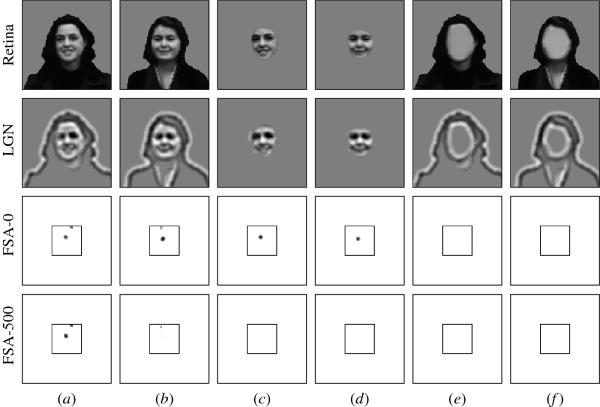
Click on the image to see a PDF version (for zooming in)
Fig. 10.17. Mother preferences based on both internal and external
features. Initially, the prenatally trained FSA responds to both
women well, with no significant difference (p = 0.28; plots a,b in the
row labeled "FSA-0"). The response is primarily due to the internal
facial features (c,d), although the hair and one of the eyes also
align into a three-dot pattern in both figures, causing weak spurious
activation (a,b). Subsequently, image (a), designated as the mother,
was presented in 25% of the postnatal learning iterations, while image
(b), the stranger, was not presented at all. After 500 iterations
(bottom row), the response to the mother is significantly greater than
to the stranger (p = 0.001). This result replicates the mother
preference found by Pascalis et al. (1995) in infants 3-9 days
old. The same results are found in the counterbalancing condition --
when trained on face (b) as the mother, (b) becomes preferred (p =
0.002; not shown). After training with real faces, there is no longer
any FSA response to the facial features alone (c,d), which replicates
Pascalis et al.'s (1995) finding that newborns no longer preferred
their mother when her face outline was covered. Importantly, no
preference is found for the face outline alone either (e,f) suggesting
that face learning in HLISSOM is holistic. This conclusion is contrary
to Pascalis et al.'s (1995) conclusion but consistent with face
learning in adults (Farah et al. 1998).
|